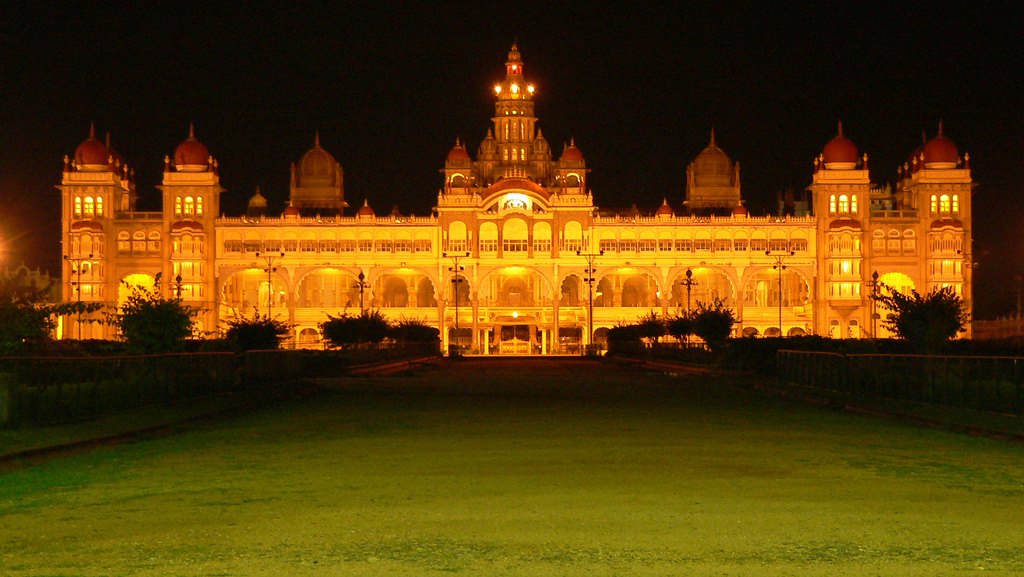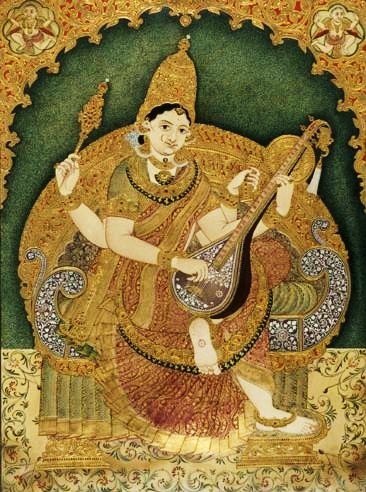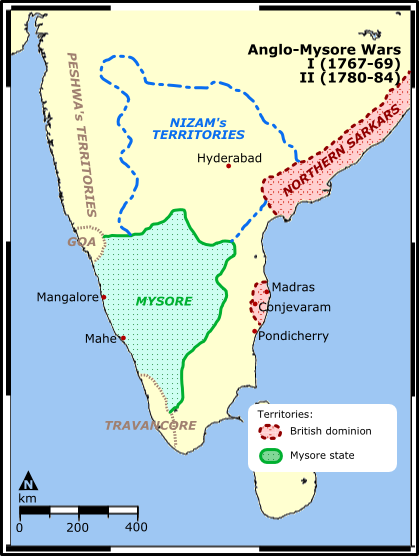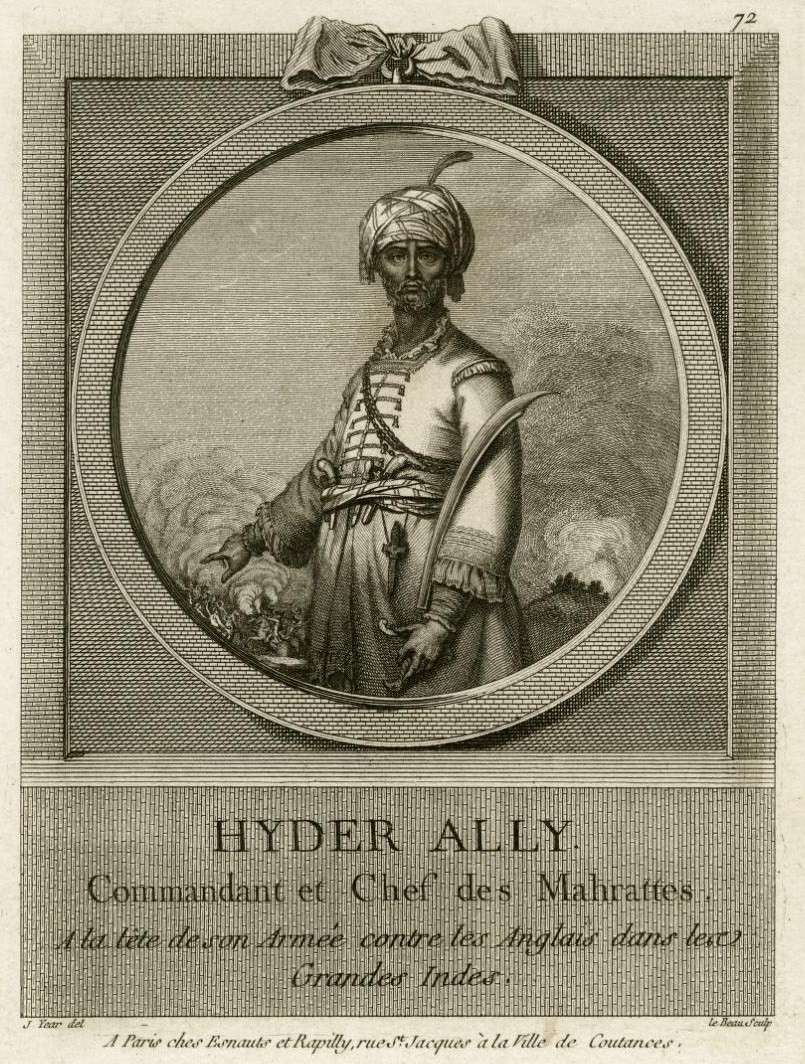|
Mysore (other)
Mysore is a city in Mysore district, and its administrative seat. Mysore also refers to: Places Inhabited places *Kingdom of Mysore, a kingdom founded about 1400 CE by the Wodeyar dynasty * Mysore State, the name of Karnataka before 1973 * Mysore division, in the southern Indian state of Karnataka ** Mysore district, in Mysore division for administrative purposes * Mysore (Lok Sabha constituency), in Karnataka, for electoral purposes *Mysore railway division, in India * Mysore (region), an unofficial region in the state of Karnataka * Mysore Circuit, a Hindi film distribution circuit, comprising areas of the former Mysore State in Karnataka *Mysore East, a suburb of Mysore in Karnataka province, India * Mysore North, a cluster of suburbs Mysore in Karnataka province, India *Mysore South, a cluster of suburbs Mysore in Karnataka province, India Other places * University of Mysore, a public university in Karnataka * Mysore Palace, a palace in Mysore, Karnataka * Mysore Plateau, a g ... [...More Info...] [...Related Items...] OR: [Wikipedia] [Google] [Baidu] |
Mysore
Mysore (), officially Mysuru (), is a city in the southern part of the state of Karnataka, India. Mysore city is geographically located between 12° 18′ 26″ north latitude and 76° 38′ 59″ east longitude. It is located at an altitude of above mean sea level. Mysore is situated at the foothills of Chamundi Hills about towards the southwest of Bangalore and spread across an area of . Mysore City Corporation is responsible for the civic administration of the city, which is also the headquarters of Mysore district and Mysore division. It served as the capital city of the Kingdom of Mysore for nearly six centuries from 1399 until 1956. The Kingdom was ruled by the Wadiyar dynasty, with a brief period of interregnum in the late 18th century when Hyder Ali and Tipu Sultan were in power. The Wadiyars were patrons of art and culture. Tipu Sultan and Hyder Ali also contributed significantly to the cultural and economic growth of the city and the state by planting mulber ... [...More Info...] [...Related Items...] OR: [Wikipedia] [Google] [Baidu] |
INS Mysore (C60)
INS ''Mysore'' was a Fiji-class light cruiser commissioned in the Indian Navy in 1957. She was acquired from the Royal Navy, where she served in World War II as . ''Mysore'' was the second cruiser to be purchased by independent India. She was commissioned into the Indian Navy in August 1957. The crest for ''Mysore'' depicted the mythological double-headed eagle Gandaberunda from the coat of arms of the former Mysore state. The ship's motto ''Na bibheti kadachana'' was taken from the Taittiriya Upanishad. Operational history In 1959, ''Mysore'' rammed the Royal Navy destroyer , severely damaging ''Hogue''s bow.Mason, Geoffrey B. (2004)Service History of Royal Navy warships in World War 2: HMS HOGUE (H.74) - Battle-class Destroyer naval-history.net. Retrieved 31 August 2010. In 1969, she collided with the destroyer ''Rana'' resulting in the latter being decommissioned and again in 1972 with the frigate ''Beas''. ''Mysore'' served as a crucible of training. On her several Indian ... [...More Info...] [...Related Items...] OR: [Wikipedia] [Google] [Baidu] |
Mysore Dasara
Mysore Dasara is the ''Nadahabba'' (state festival) of the state of Karnataka in India. It is a 10-day festival, starting with nine nights called Navaratri and the last day being Vijayadashami. The festival is observed on the tenth day in the Hindu calendar month of ''Ashvina'', which typically falls in the Gregorian months of September and October. The Hindu festival of Dasara, Navratri and Vijayadashami celebrates the victory of good over evil. It was the day in the Hindu legends when Goddess Durga, Chamundeshwari (Durga) killed the demon Mahishasura. Mahishasura is the demon whose slaying by the Goddess gave the city the name Mysuru. The Mysuru tradition celebrates the warriors and the state fighting for the good during this festival, ritually worshipping and displaying the state sword, weapons, elephants, horses along with Hindu Devi goddess in her warrior form (predominantly) as well as the Vishnu avatar Rama. The ceremonies and a major procession is traditionally presided ... [...More Info...] [...Related Items...] OR: [Wikipedia] [Google] [Baidu] |
Mysore Painting
Mysore painting ( kn, ಮೈಸೂರು ಚಿತ್ರಕಲೆ) is an important form of classical South Indian painting style that originated in and around the town of Mysore in Karnataka encouraged and nurtured by the Mysore rulers. Painting in Karnataka has a long and illustrious history, tracing its origins back to the Ajanta times (2nd century B.C. to 7th century A.D.) The distinct school of Mysore painting evolved from the paintings of Vijayanagar times during the reign of the Vijayanagar Kings (1336-1565 AD) The rulers of Vijayanagar and their feudatories encouraged literature, art, architecture, religious and philosophical discussions. With the fall of the Vijayanagar empire after the Battle of Talikota the artists who were till then under royal patronage migrated to various other places like Mysore, Tanjore, Surpur, etc. Absorbing the local artistic traditions and customs, the erstwhile Vijayanagar School of Painting gradually evolved into the many styles of pain ... [...More Info...] [...Related Items...] OR: [Wikipedia] [Google] [Baidu] |
Mysore Style
The Mysore style of asana practice is the way of teaching yoga as exercise within the Ashtanga Vinyasa Yoga tradition as taught by K. Pattabhi Jois in the southern Indian city of Mysore; its fame has made that city a yoga hub with a substantial yoga tourism business. Method Mysore style differs from the usual way of teaching yoga. The class is not "led" as a whole, but rather all instruction is one-on-one within the group class setting. Students practice their own portion of the Ashtanga sequence of asanas at their own pace. The teacher assists each student individually by giving physical adjustments & verbal instruction. Style In Mysore style, students learn the fixed order of asanas combining movement with free breathing, with sound. Through vinyasa, there is continuity via the breath from one asana to the next, so that each asana builds from the previous one. Each student is given a yoga routine according to their ability. Newer and beginner students tend to have a much s ... [...More Info...] [...Related Items...] OR: [Wikipedia] [Google] [Baidu] |
Mysorean Rockets
Mysorean rockets were an Indian military weapon, the iron-cased rockets were successfully deployed for military use. The Mysorean army, under Hyder Ali and his son Tipu Sultan, used the rockets effectively against the British East India Company during the 1780s and 1790s. Their conflicts with the company exposed the British to this technology further, which was then used to advance European rocketry with the development of the Congreve rocket in 1805. Technology and deployment There was a regular rocket corps in the Mysore Army, beginning with about 1,200 men in Hyder Ali's time. During the Second Anglo-Mysore War, Colonel William Baillie's ammunition stores are thought to have been detonated by a stray rocket at the Battle of Pollilur in 1780, which contributed to British defeat in the battle. At Pollilur rockets restricted East India Company vanguard movement, skimming along the surface, lacerating troops, and in one specific instance, shattered an Ensign’s leg. With rocke ... [...More Info...] [...Related Items...] OR: [Wikipedia] [Google] [Baidu] |
Third Anglo-Mysore War
The Third Anglo-Mysore War (1790–1792) was a conflict in South India between the Kingdom of Mysore and the British East India Company, the Kingdom of Travancore, the Maratha Empire, and the Nizam of Hyderabad. It was the third of four Anglo-Mysore Wars. Background Tipu Sultan, the ruler of the Kingdom of Mysore, and his father Hyder Ali before him, had previously fought twice with the forces of the British East India Company. The First Anglo-Mysore War, fought in the 1760s, had ended inconclusively on both sides, with treaty provisions including promises of mutual assistance in future conflicts. British failure to support Mysore in conflicts with the Maratha Empire and other actions supportive of Mysore's enemies led Hyder to develop a dislike for the British. After the British took the French-controlled port of Mahé in 1779, Hyder, who had been receiving military supplies through that port and had placed it under his protection, opened the Second Anglo-Mysore War. This w ... [...More Info...] [...Related Items...] OR: [Wikipedia] [Google] [Baidu] |
Second Anglo-Mysore War
The Second Anglo-Mysore War was a conflict between the Kingdom of Mysore and the British East India Company from 1780 to 1784. At the time, Mysore was a key French ally in India, and the conflict between Britain against the French and Dutch in the American Revolutionary War sparked Anglo-Mysorean hostilities in India. The great majority of soldiers on the company side were raised, trained, paid and commanded by the company, not the British government. However, the company's operations were also bolstered by Crown troops sent from Britain, and by troops from Hanover, which was also ruled by Britain's King George III. Following the British seizure of the French port of Mahé in 1779, Mysorean ruler Hyder Ali opened hostilities against the British in 1780, with significant success in early campaigns. As the war progressed, the British recovered some territorial losses. Both France and Britain sent troops and naval squadrons from Europe to assist in the war effort, which widened la ... [...More Info...] [...Related Items...] OR: [Wikipedia] [Google] [Baidu] |
First Anglo-Mysore War
The First Anglo-Mysore War (1766–1769) was a conflict in India between the Sultanate of Mysore and the East India Company. The war was instigated in part by the machinations of Asaf Jah II, the Nizam of Hyderabad, who sought to divert the company's resources from attempts to gain control over the Northern Circars. Background The eighteenth century was a period of great turmoil in Indian subcontinent. Although the century opened with much of the subcontinent under the control of the Mughal Empire, the death in 1707 of Emperor Aurangzeb resulted in the fracturing of the empire, and a struggle among viceroys and other local rulers for territory. In the 1740s and 1750s French and British colonial companies became more active in these local conflicts. By the Third Carnatic War (1757–1763) the British had gained somewhat solid footholds at Bombay, Madras, and Calcutta, and had also marginalised, although not eliminated, the influence of other colonial powers. Their eastern hol ... [...More Info...] [...Related Items...] OR: [Wikipedia] [Google] [Baidu] |
Anglo-Mysore Wars
The Anglo-Mysore Wars were a series of four wars fought during the last three decades of the 18th century between the Kingdom of Mysore#Under Haider Ali and Tipu Sultan, Sultanate of Mysore on the one hand, and the British East India Company (represented chiefly by the neighbouring Madras Presidency), Maratha Empire, Kingdom of Travancore, and the Hyderabad State, Kingdom of Hyderabad on the other. Hyder Ali and his succeeding son Tipu Sultan, Tipu fought the wars on four fronts: with the British attacking from the west, south and east and the Nizam of Hyderabad, Nizam's forces attacking from the north. The Fourth Anglo-Mysore War, fourth war resulted in the overthrow of the house of Hyder Ali and Tipu (the latter was killed in the fourth war, in 1799), and the dismantlement of Mysore to the benefit of the East India Company, which Company rule in India, took control of much of the Indian subcontinent. The four wars First Anglo-Mysore War The First Anglo-Mysore War (1767 ... [...More Info...] [...Related Items...] OR: [Wikipedia] [Google] [Baidu] |
Mysore (1789–91)
Mysore (), officially Mysuru ( kn, ಮೈಸೂರು, link=Kannada, ), is a metropolitan city in the southern Indian state of Karnataka. It is the third- most populous and third-largest city in the state, and is one of the cleanest cities in India. It is the seat of the Wadiyar dynasty and was the capital of the Kingdom of Mysore for almost six centuries, from 1399 until 1947. It is currently the headquarters of Mysore district and Mysore division. Known for its heritage structures and palaces, including the famous Mysore Palace, and noted for its culture, Mysore is popularly known as the "City of Palaces", the "Heritage City", and the "Cultural Capital of Karnataka". For its pristine and calm ambience, it is also known as "Pensioners' Paradise". Mysore is situated at the foothills of the Chamundi Hills. At an altitude of above mean sea level, the city of Mysore is geographically located at 12° 18′ 26″ north latitude and 76° 38′ 59″ east longitude. It is about so ... [...More Info...] [...Related Items...] OR: [Wikipedia] [Google] [Baidu] |






.jpg)